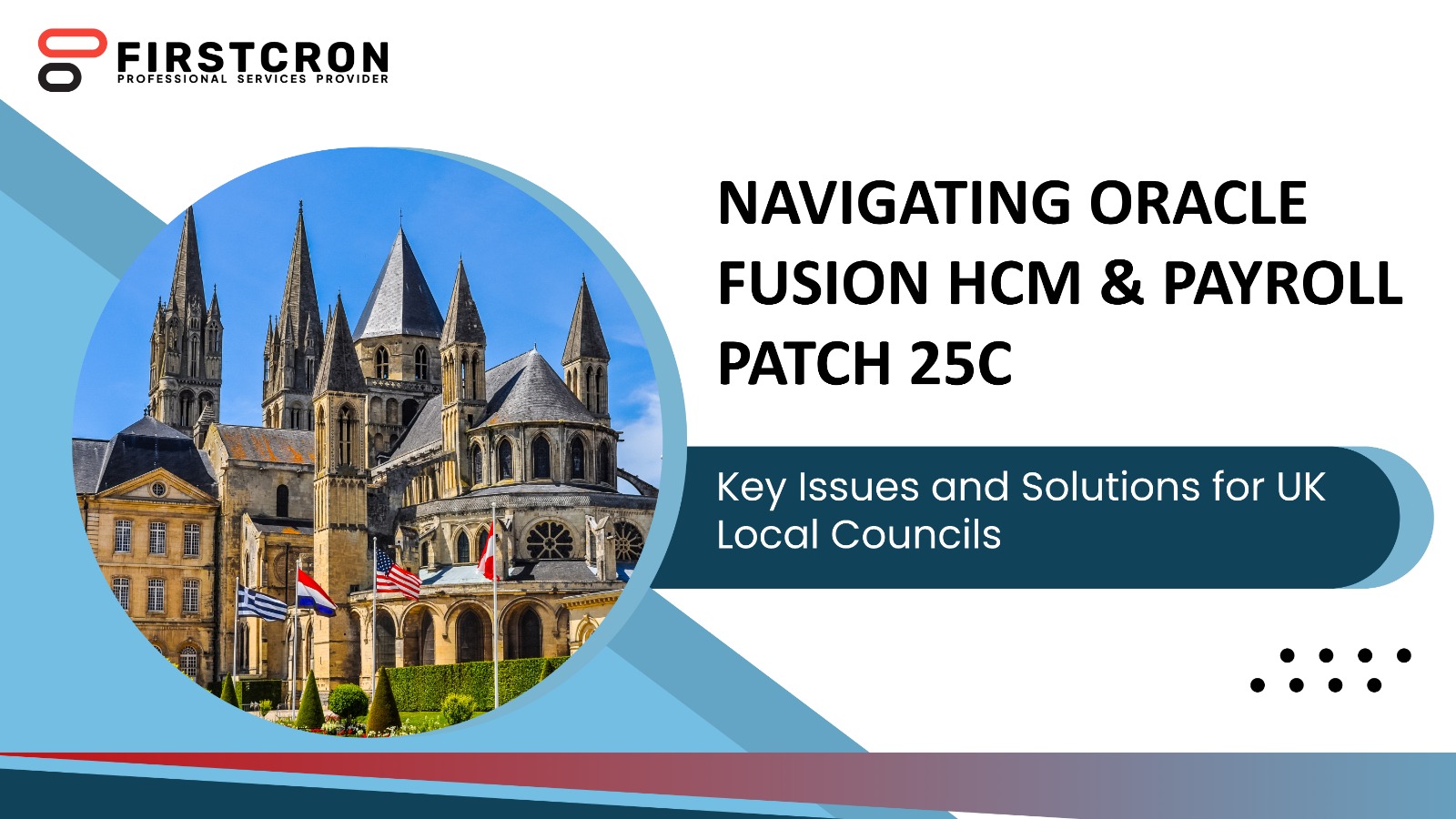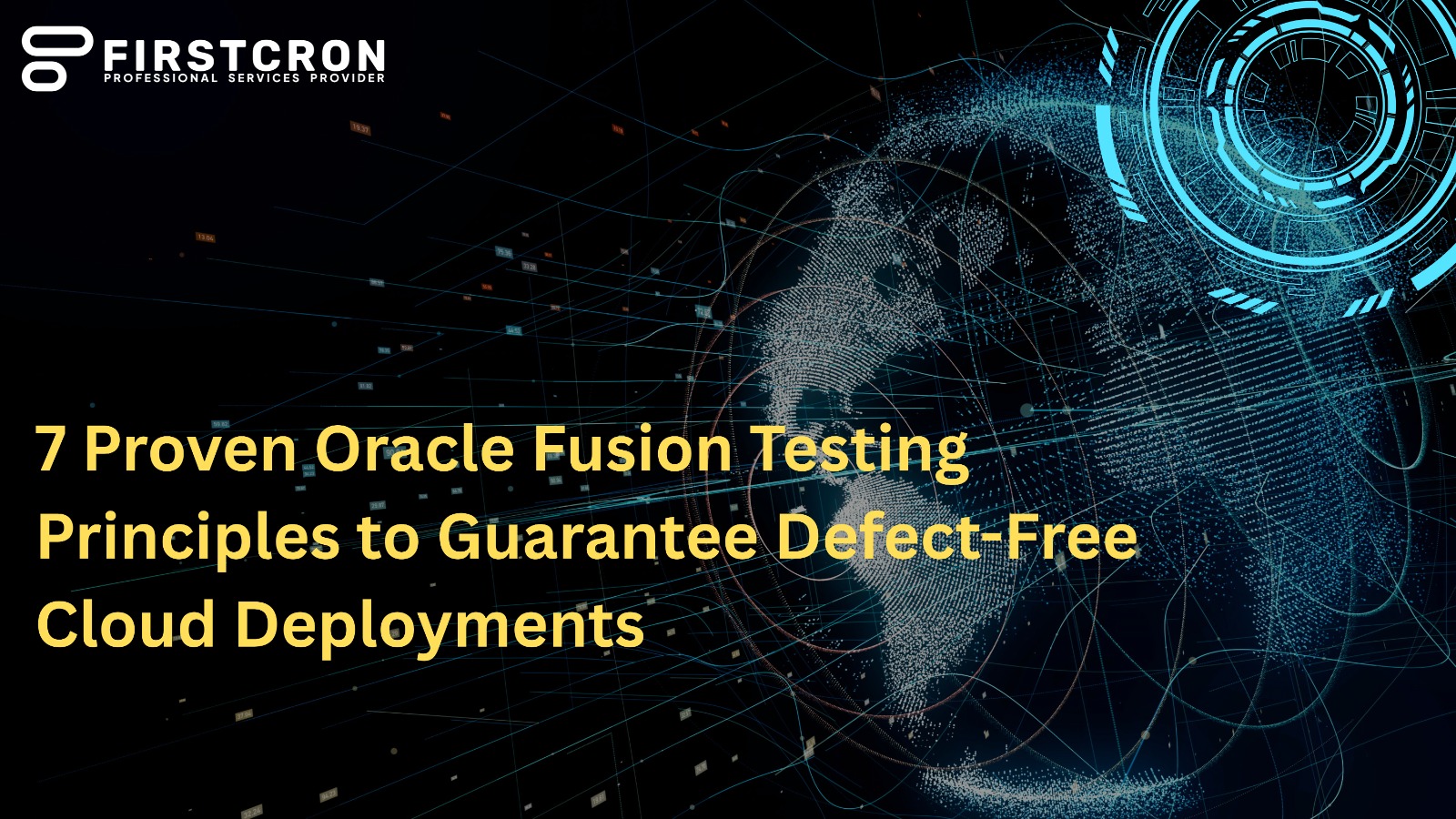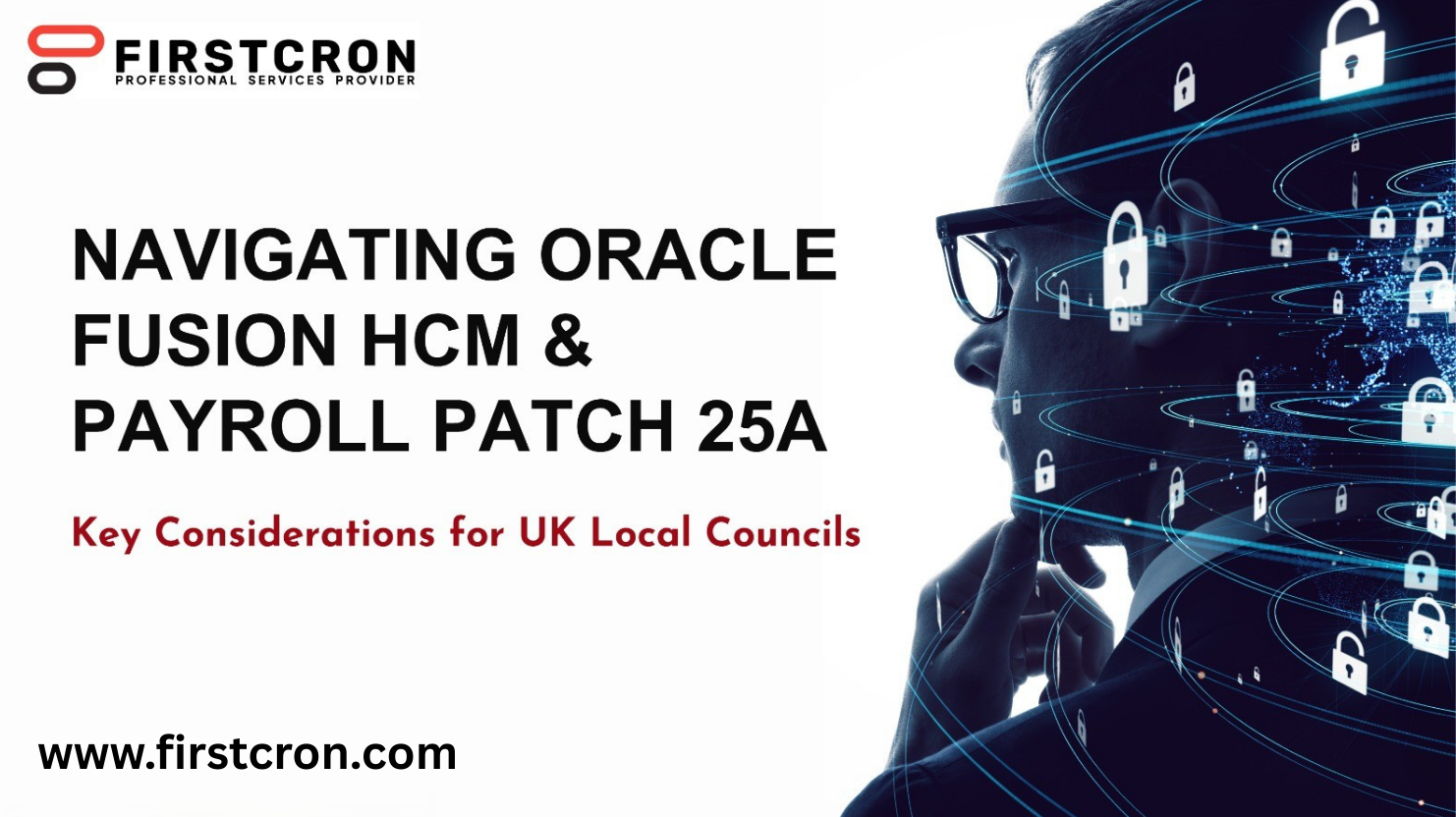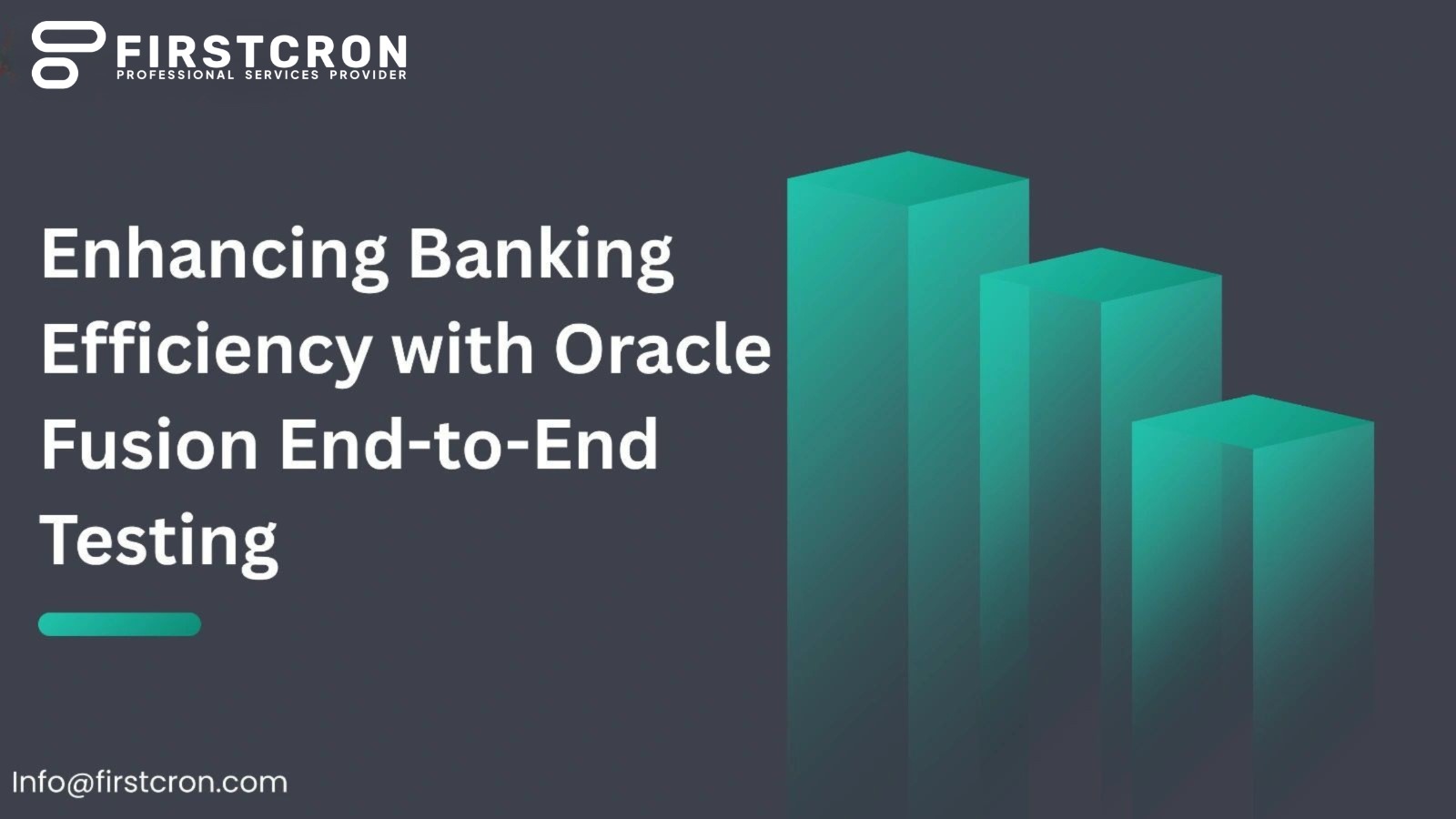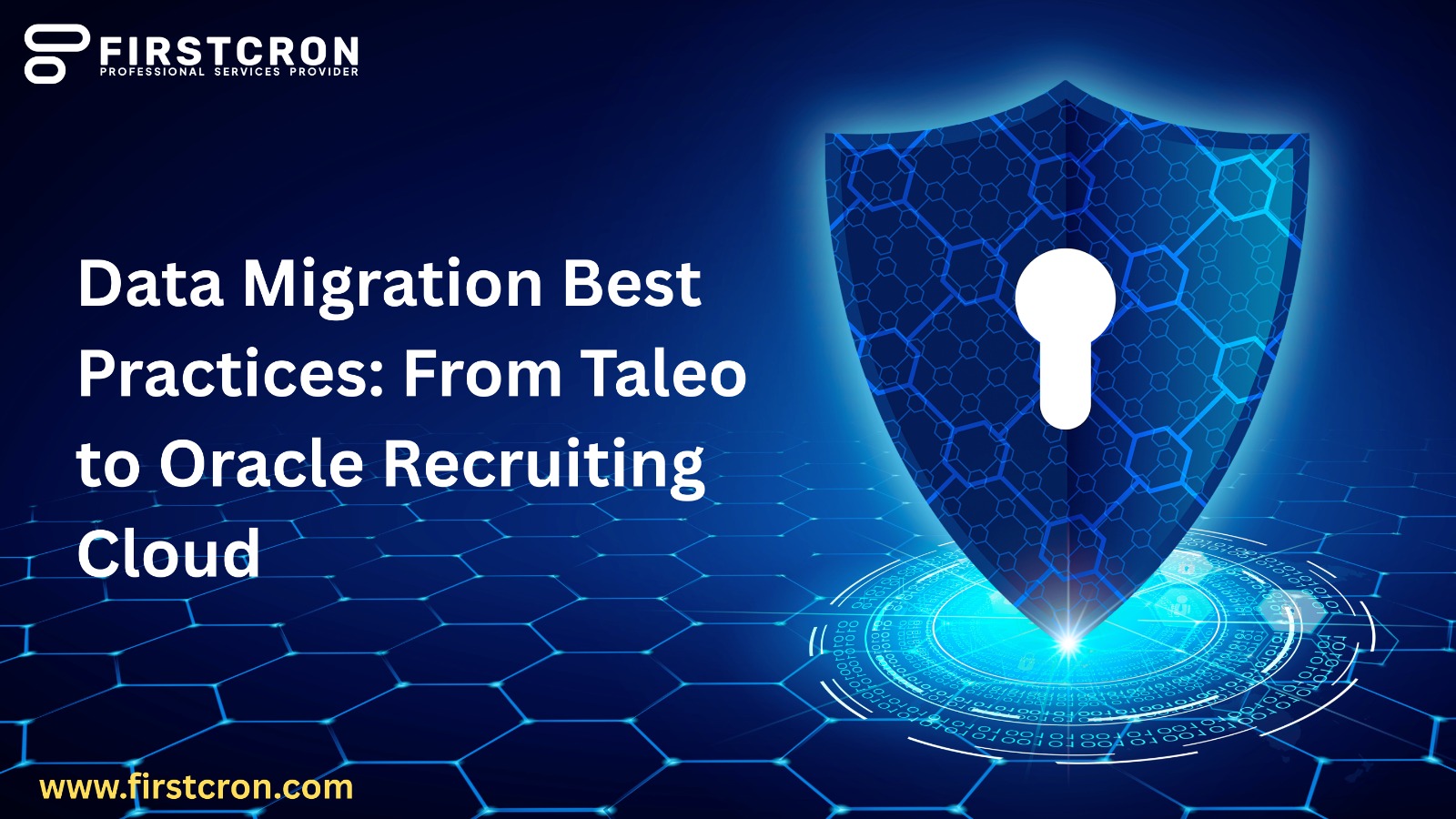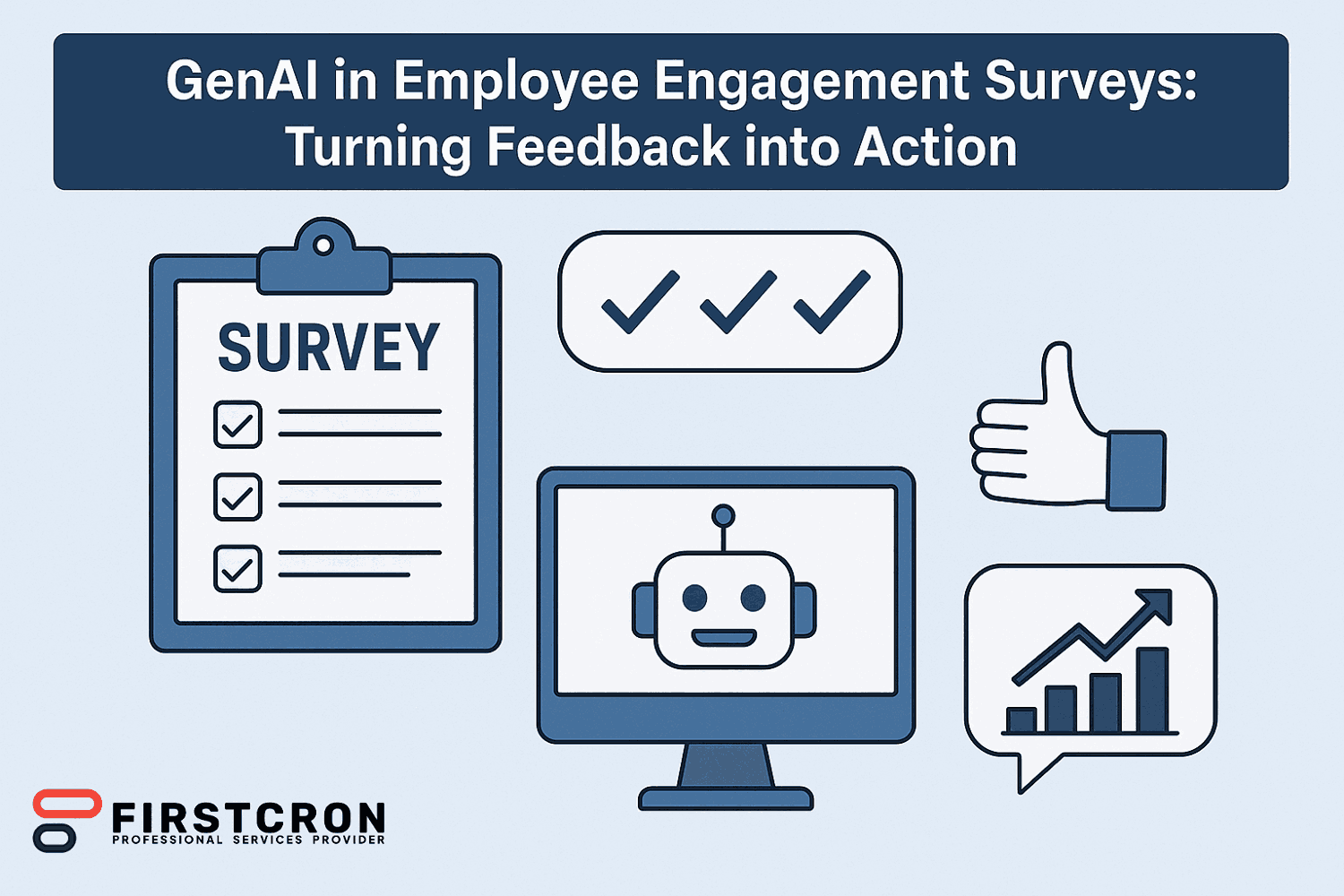
Employee engagement surveys have long been a staple of organizational management. They allow leaders to understand how employees feel about their work, the culture, leadership, and overall satisfaction within the company. Yet, despite their popularity, traditional engagement surveys often fail to deliver actionable outcomes. Employees spend time providing feedback, but their voices get lost in complex datasets and lengthy reports. Managers, in turn, struggle to extract meaningful insights and implement effective changes.With Generative AI (GenAI), this paradigm is shifting. AI is no longer just a tool for analyzing numerical data; it can interpret written feedback, summarize employee sentiments, and generate recommendations tailored to specific organizational needs. This transformation makes employee surveys more valuable by bridging the gap between raw responses and actionable engagement strategies.
In this blog we’ll cover
- The Problem With Traditional Engagement Surveys
- How GenAI Enhances Survey Analysis
- From Insights To Actionable Strategies
- The Role Of Plain-Language Summaries
- Improving Employee Trust Through Transparency
- Personalization Of Engagement Strategies
- Reducing HR Workload And Bias
- Benefits Of GenAI In Engagement Surveys
- Integration With Other HR Tools
- The Predictive Power Of AI
- Challenges Of Implementing GenAI In Surveys
- Building A Feedback Culture With GenAI
- The Future Of Employee Engagement With AI
- Conclusion: From Surveys To Solutions
The Problem With Traditional Engagement Surveys
While surveys gather essential information, the challenge lies in making sense of the data. Open-ended responses, in particular, are difficult to analyze at scale. HR teams must manually read through thousands of comments, categorize themes, and then condense them into reports. This process is not only time-consuming but also prone to bias, as human interpretation inevitably introduces subjectivity. As a result, many organizations fail to act on survey findings, leaving employees feeling unheard and disengaged.
How GenAI Enhances Survey Analysis
GenAI offers a breakthrough by automating the interpretation of survey responses. It can read both structured data (like ratings) and unstructured data (like comments) to identify themes, highlight key sentiments, and detect emerging issues. For example, if many employees mention “lack of career growth opportunities,” GenAI can cluster these responses into a clear insight and explain its relevance in plain English. Moreover, AI can go a step further by generating recommendations tailored to the specific challenge—such as enhancing training programs, mentorship initiatives, or career pathways.
From Insights To Actionable Strategies
One of the biggest frustrations with surveys is the lack of follow-up. Employees want to see their feedback translated into meaningful actions. GenAI excels here by not only summarizing what employees are saying but also suggesting concrete strategies. For instance, if employees express concerns about workload, GenAI might recommend exploring workload balancing initiatives, flexible schedules, or investment in automation tools. By providing targeted actions, AI shortens the path from survey to solution.
The Role Of Plain-Language Summaries
A significant barrier in traditional survey reporting is complexity. Lengthy, data-heavy reports often confuse managers rather than empower them. GenAI transforms this experience by producing plain-language summaries. A manager could receive a short narrative like: “Employees in your department feel highly motivated by leadership support but are frustrated with limited career advancement opportunities.” These summaries make insights accessible to leaders at all levels, ensuring clarity and accountability.
Improving Employee Trust Through Transparency
When employees see that their survey feedback is quickly summarized and acted upon, it builds trust in the process. Too often, organizations conduct surveys but fail to follow up, leading to cynicism. With GenAI, organizations can share high-level summaries back with employees shortly after survey completion. For example, employees might receive: “We heard your feedback about workload and communication challenges. Here are the steps we’re taking.” This transparency fosters a culture where employees feel valued and confident their voices matter.
Personalization Of Engagement Strategies
Every department, and sometimes even every team, has different engagement needs. GenAI can analyze survey results at a granular level, offering tailored recommendations for each group. A sales team might need more recognition programs, while a technical team might prioritize better career development pathways. AI ensures that engagement strategies are not one-size-fits-all but targeted, personalized, and more likely to succeed.
Reducing HR Workload And Bias
HR professionals often spend countless hours compiling survey results, leaving less time to focus on implementing engagement initiatives. GenAI reduces this burden by automating much of the analysis. At the same time, it minimizes bias by using consistent frameworks for summarization, avoiding the selective interpretation that can arise in manual reviews. This combination frees HR teams to focus on what truly matters—designing and executing engagement strategies.
Benefits Of GenAI In Engagement Surveys
The adoption of GenAI in employee engagement surveys brings a wide range of benefits that impact both organizations and employees:
- Faster turnaround: Results are summarized almost instantly, enabling quicker action.
- Clarity for leaders: AI translates data into plain English insights.
- Personalized recommendations: Actions are tailored to each department or team.
- Enhanced transparency: Organizations can share clear summaries with employees.
- Scalability: Even large organizations with thousands of employees can process feedback efficiently.
- Employee trust: Faster responses build confidence in the survey process.
- Bias reduction: AI applies consistent analysis across all responses.
These advantages redefine engagement surveys from a data-gathering exercise into a continuous improvement tool.
Integration With Other HR Tools
GenAI does not need to exist in isolation. It can integrate with HR management systems, performance data, and turnover statistics to provide holistic insights. For example, if surveys indicate disengagement in a certain department, AI can cross-check with turnover data to highlight potential retention risks. By connecting survey insights with broader HR analytics, organizations can make more informed and proactive decisions.
The Predictive Power Of AI
Beyond summarizing current surveys, GenAI can also predict future engagement challenges. By analyzing trends over time, AI can identify areas of potential concern before they become critical. For instance, a rising number of comments about career stagnation might predict future attrition among high-potential employees. With predictive insights, councils and organizations can take preventive action rather than waiting for problems to escalate.
Challenges Of Implementing GenAI In Surveys
Like any technology, implementing GenAI in employee surveys comes with challenges. Data privacy must be carefully managed since employee feedback often contains sensitive information. Organizations must also ensure transparency about how AI is used and reassure employees that their voices are interpreted fairly. Ethical considerations—such as ensuring AI models are not biased toward specific groups—must be addressed through rigorous oversight and testing.
Building A Feedback Culture With GenAI
Surveys alone cannot create engagement; they must be part of a broader feedback culture. GenAI can play a central role in this transformation by making feedback loops faster, clearer, and more actionable. When employees see a culture of listening and improvement, they are more likely to provide honest input in future surveys, creating a virtuous cycle of engagement. Over time, councils and organizations can use this culture to strengthen performance, trust, and workplace satisfaction.
The Future Of Employee Engagement With AI
As GenAI evolves, its role in employee engagement surveys will only deepen. Future applications may include interactive feedback sessions where employees can ask AI questions about survey results or dashboards that allow managers to simulate the impact of different engagement actions. For example, a manager might ask: “What would happen if we increased professional development opportunities?” and the AI could model the likely impact on engagement scores. This interactivity could transform employee engagement from a static process into a dynamic, continuous dialogue.
Conclusion: From Surveys To Solutions
GenAI in employee engagement surveys represents a major leap forward in how organizations listen to and act on employee feedback. By summarizing responses quickly, eliminating bias, and recommending targeted actions, AI ensures that surveys are not just data-collection exercises but strategic tools for building trust, engagement, and performance. Councils and organizations that adopt this technology can expect not only higher employee satisfaction but also stronger alignment between workforce needs and organizational strategy. The future of employee engagement lies in moving beyond raw data toward clear, actionable insights—and GenAI is making that future possible today. For more details please visit firstcron.com.
Tags
Related Post
Navigating Oracle Fusion HCM & Payroll Patch 25C: Key Issues And Solutions For UK Local Councils
July 26th, 2025 10 min read
7 Reasons Why Companies Are Moving From Taleo To Oracle Recruiting Cloud
June 2nd, 2025 14 min read
7 Proven Oracle Fusion Testing Principles To Guarantee Defect-Free Cloud Deployments
May 16th, 2025 15 min read
Navigating Oracle Fusion HCM & Payroll Patch 25A: Key Considerations For UK Local Councils
July 27th, 2025 10 min read
Driving Compliance And Security With Smart Testing In Oracle Fusion
June 5th, 2025 9 min read
WEEKEND READS
Navigating Oracle Fusion HCM & Payroll Patch 25C: Key Issues And Solutions For UK Local Councils
July 26th, 2025 10 min read
7 Reasons Why Companies Are Moving From Taleo To Oracle Recruiting Cloud
June 2nd, 2025 14 min read
7 Proven Oracle Fusion Testing Principles To Guarantee Defect-Free Cloud Deployments
May 16th, 2025 15 min read
Navigating Oracle Fusion HCM & Payroll Patch 25A: Key Considerations For UK Local Councils
July 27th, 2025 10 min read
Driving Compliance And Security With Smart Testing In Oracle Fusion
June 5th, 2025 9 min read
How End-to-End Testing Of Oracle Fusion Enhances Operational Efficiency In Banking
May 23rd, 2025 11 min read
Smart Onboarding Journeys With AI: Personalized Employee Integration Through Oracle HCM Core And Learning
September 13th, 2025 21 min read
UKG (Ultimate/Kronos) — USA And Global, Legacy-to-Modern Workforce Management
October 5th, 2025 23 min read
Data Migration Best Practices: From Taleo To Oracle Recruiting Cloud
May 28th, 2025 13 min read






